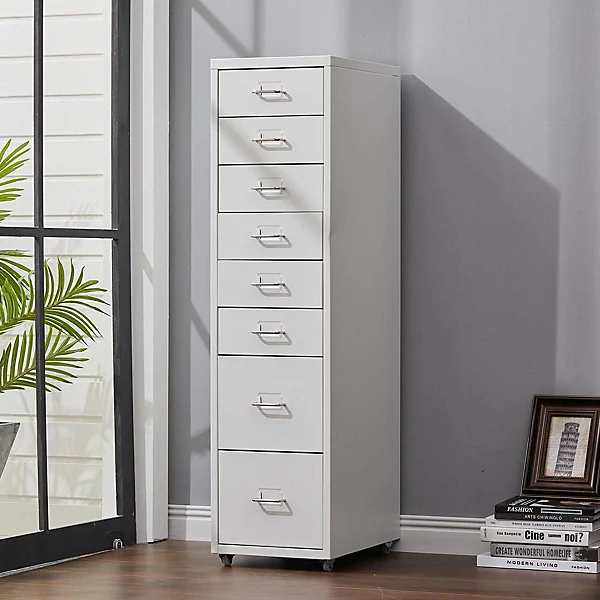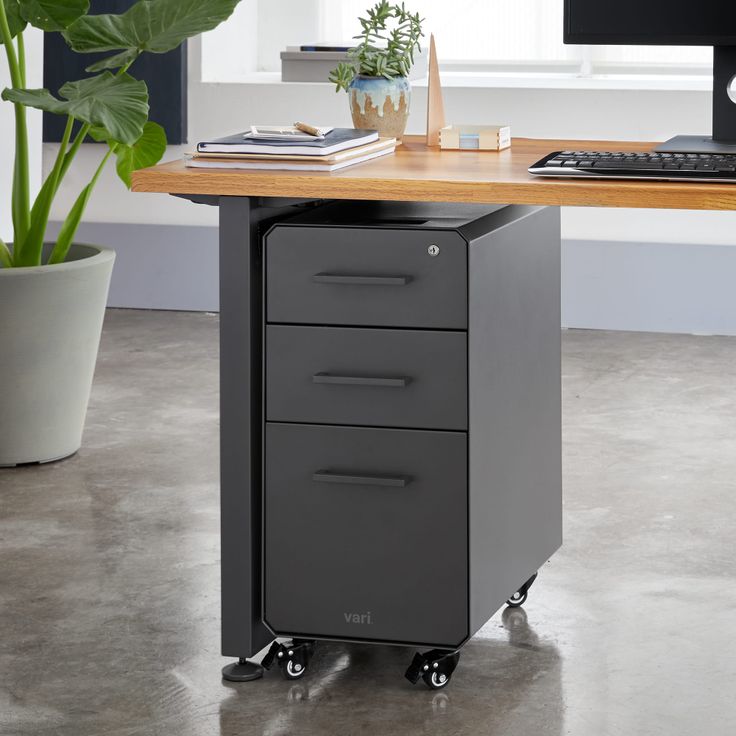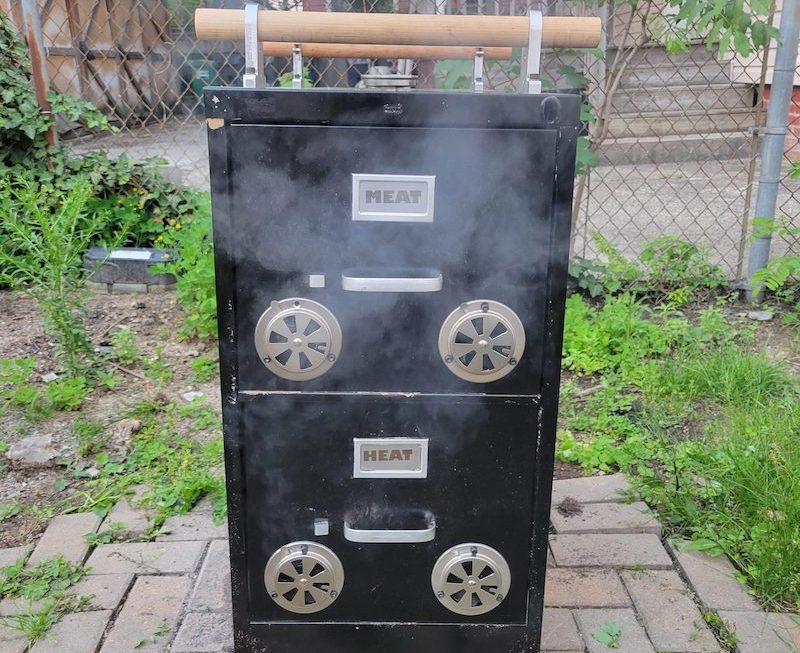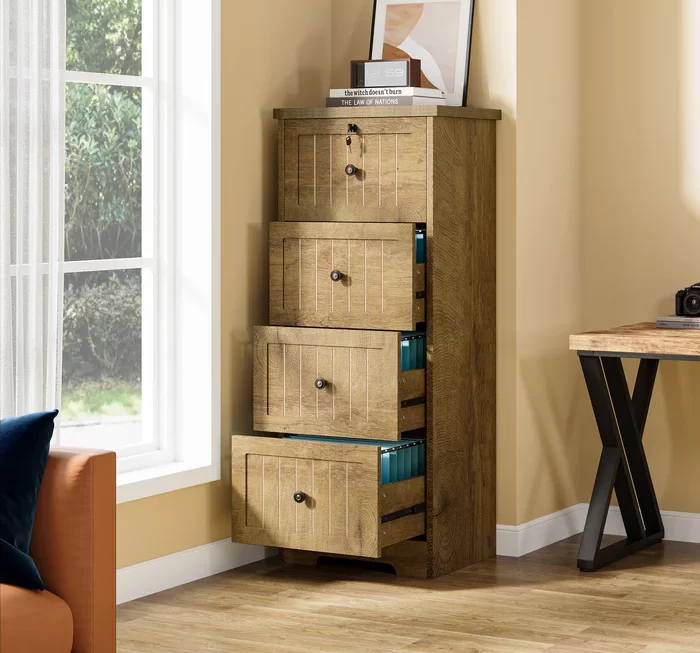Introduction to Document Security
In today’s digital age, protecting physical documents is often overlooked. Yet, it remains vital. Sensitive information on paper can fall into the wrong hands, just as easily as digital data can. This risk makes securing documents a top priority for businesses and individuals alike. A locking filing cabinet offers a simple, yet effective, method to safeguard these valuable assets. Choosing the right locking filing cabinet requires understanding various types and their benefits. It also means considering factors such as security level, size, capacity and durability. Ensuring easy access and use while maintaining tight security is crucial. This introduction to document security will lead us through the importance of locking filing cabinets, their types, and how to select the perfect one for your needs.
Types of Locking Filing Cabinets
When it comes to securing documents, selecting the appropriate type of locking filing cabinet is essential. Understanding the different types available helps tailor your choice to your security needs and preferences. Below we explore the common types of locking cabinets.
Key Lock Filing Cabinets
Key lock filing cabinets are the traditional choice. They use a physical key to unlock the cabinet. Key lock cabinets are a reliable option for those who prefer a tangible form of security. Here are the benefits and considerations:
- They provide a straightforward security solution.
- Key locks are usually less expensive than more advanced lock types.
- The risk of losing the key or having it copied does exist.
Combination Lock Filing Cabinets
Combination lock filing cabinets require a set of numbers to gain access. There is no key to lose or risk being copied. Consider these points for combination locks:
- They offer a higher level of security as the combination can be changed.
- Ideal for environments where multiple people need access.
- It’s important to remember the combination or keep it secure.
Electronic Lock Filing Cabinets
Electronic lock filing cabinets provide modern security with the use of codes or electronic keys. They come with various features to consider:
- They often include features like automatic lock timers and audit trails.
- Suitable for areas with high security needs.
- Reliance on power and potential for electronic failures should be considered.
Each type of locking filing cabinet serves a unique purpose and comes with its own set of advantages and drawbacks. Your choice should be guided by your specific security concerns, budget, and convenience preferences. By understanding these key variations, you can make an informed decision that ensures the safety of your sensitive documents.
Factors to Consider When Choosing a Locking Filing Cabinet
When selecting the right locking filing cabinet, several factors come into play. The key points to consider are security level, size and capacity, material and durability, and ease of use and accessibility. These elements influence the overall safety and functionality of the filing cabinet, ensuring that your documents stay secure and accessible.
Security Level
Security is the top priority in a locking filing cabinet. Assess the sensitivity of the documents to determine the needed security level. Higher security needs might call for advanced locking mechanisms like biometric or electronic locks. For less sensitive documents, a key lock or combination lock can provide adequate protection. Balance your security needs with your budget.
Size and Capacity
Size and capacity are critical. A cabinet must fit your space and hold all your documents. Consider future document additions as well. Opt for a size that accommodates growth, but avoid an oversized unit that takes up unnecessary space.
Material and Durability
The filing cabinet’s material affects its strength and lifespan. Steel cabinets are common for their durability and resistance to wear. Wood cabinets may suit office aesthetics better but consider their resistance to damage. Choose a material that aligns with your security needs and office environment.
Ease of Use and Accessibility
Ease of use is essential. A locking filing cabinet should offer easy access to authorized personnel. Ensure the lock mechanism is user-friendly. If multiple people need access, a combination or electronic lock might serve better than a key lock. The filing cabinet should not hinder daily operations. Select one that provides security without sacrificing accessibility.
Installation and Maintenance Tips
Proper installation and regular maintenance are crucial for a locking filing cabinet. They ensure the cabinet functions well over time. To maintain peak performance and reliability, follow these tips.
Proper Installation Practices
Ensure your locking filing cabinet is stable and level during installation. Place it on a flat surface. Use wall anchors if needed to prevent tipping. Check that drawers open smoothly. Verify that the lock engages correctly. Take care not to lose keys or forget codes during setup. For electronic models, make sure you have a reliable power source.
Regular Maintenance and Upkeep
Regular maintenance keeps your filing cabinet secure and operational. Clean your cabinet with a damp cloth to avoid dust buildup. Avoid harsh chemicals that could damage the lock. Test the lock mechanism regularly to ensure it works. If your cabinet has a key lock, consider changing the locks periodically for added security. For electronic locks, check battery life or backup power options. Keep a maintenance log to track any issues or repairs.
Advanced Security Features
When prioritizing document security, advanced security features in locking filing cabinets can provide an extra layer of protection. These features typically cater to environments requiring the highest security standards, like government agencies, legal offices, and healthcare facilities. Let’s delve into some of the cutting-edge options available.
Biometric Locks
Biometric locks represent the next level in securing filing cabinets. Here’s why they stand out:
- They use unique physical traits, like fingerprints or retina scans, for access.
- Access cannot be transferred or stolen like a key or combination.
- They offer quick and easy access for authorized users.
While biometric locks can be more costly, their investment reflects the unparalleled security they offer. They are ideal where high-value or sensitive documents are involved.
Smart Technologies in Locking Systems
Smart technologies have revolutionized filing cabinet security. Incorporate these tech advancements for modern security solutions:
- Remote locking and unlocking features offer control from anywhere.
- Audit trails keep records of who accessed the cabinet and when.
- Alerts and notifications can be set for unauthorized access attempts.
Smart locking systems require consistent monitoring and a stable power supply. Consider if these systems integrate well with your existing security protocols.
Best Practices for Document Safety and Confidentiality
When it comes to document safety, adhering to best practices is crucial. Ensuring confidentiality isn’t just about locking away papers. It involves organizing, managing, and securing documents in a way that prevents unauthorized access and loss. By following these best practices, you can enhance the security framework of your sensitive information.
Organizing and Storing Sensitive Documents
Good organization is the backbone of document safety. Follow these steps to keep your documents well-organized and secure:
- Label all documents clearly for quick identification.
- Sort files into categories and store them in designated areas within the locking filing cabinet.
- Limit access to sensitive documents to authorized personnel only.
- Conduct regular audits to ensure documents are in the right place and to check for any missing files.
Storing documents securely also involves environmental considerations:
- Keep the filing cabinet in a secure location, away from high traffic areas.
- Ensure the area is free from environmental hazards, such as water or heat sources, that could damage documents.
Creating a Document Management Policy
A sound document management policy supports confidentiality and efficiency. When crafting a policy, take the following into account:
- Outline clear guidelines for document handling and storage.
- Define who has access to various levels of sensitive information.
- Set up protocols for handling and disposing of documents that are no longer needed.
- Train employees on the policy to ensure consistent implementation.
Your policy should also be a living document that evolves with changing security needs. Regularly review and update the policy to keep it current with best practices. By doing so, your locking filing cabinet and document management policy will work in tandem to safeguard your important papers reliably and effectively.





